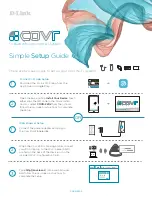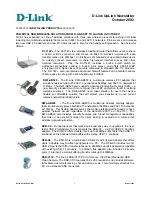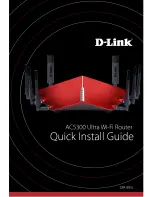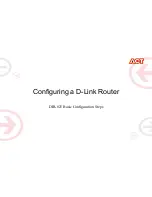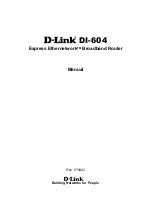
1-1
Chapter 1: Introduction
The 2.4 GHz Wireless Access Point is an IEEE 802.11b/g access point that provides
transparent, wireless high-speed data communications between the wired LAN and
fixed or mobile devices equipped with an 802.11b, or 802.11g wireless adapter.
This solution offers fast, reliable wireless connectivity with considerable cost savings
over wired LANs (which include long-term maintenance overhead for cabling). Using
802.11b and 802.11g technology, this access point can easily replace a 10 Mbps
Ethernet connection or seamlessly integrate into a 10/100 Mbps Ethernet LAN.
This solution offers fast, reliable wireless connectivity with considerable cost savings
over wired LANs (which include long-term maintenance overhead for cabling). Using
802.11b and 802.11g technology, this access point can easily replace a 10 Mbps
Ethernet connection or seamlessly integrate into a 10/100 Mbps Ethernet LAN.
The access point radio interface can operate in one of five modes:
•
Access Point
– Providing conectivity to wireless clients in the service area.
•
AP Client
– Act as a wireless clients in the service area.
•
Repeater
– Providing an extended link to a remote access point from the wired
LAN. In this mode the access point does not have a connection to a wired Ethernet
LAN.
•
Bridge
– Providing links to other access points in “Bridge” or “Root Bridge” mode
connecting wired LAN segments.
•
Root Bridge
– Providing links to other access points in “Bridge” mode connecting
wired LAN segments. Only one unit in the wireless bridge network can be set to
“Root Bridge” mode.
In addition, the access point offers full network management capabilities through an
easy to configure web interface, a command line interface for initial configuration
and troubleshooting, and support for Simple Network Management tools, such as
HP’s OpenView.
Radio Characteristics
– The IEEE 802.11g standard uses a radio modulation
technique known as Orthogonal Frequency Division Multiplexing (OFDM), and a
shared collision domain (CSMA/CA). It operates at the 2.4 GHz Unlicensed National
Information Infrastructure (UNII) band for connections to 802.1g clients.
IEEE 802.11g includes backward compatibility with the IEEE 802.11b standard.
IEEE 802.11b also operates at 2.4 GHz, but uses Direct Sequence Spread
Spectrum (DSSS) and Complementary Code Keying (CCK) modulation technology
to achieve a communication rate of up to 11 Mbps.
The access point supports a 54 Mbps half-duplex connection to Ethernet networks
for each active channel.
Summary of Contents for EAP2316A
Page 1: ...www edge core com Installation Guide Powered by Accton EAP2316A 2 4 GHz Wireless Access Point...
Page 2: ......
Page 4: ...EAP2316A E072005 R01...
Page 8: ...iv...
Page 10: ...vi Contents...
Page 16: ...Introduction 1 6...
Page 28: ...Troubleshooting A 2...
Page 32: ...Cables and Pinouts B 4...
Page 37: ......
Page 38: ...Model Number EAP2316A Pub Number 150200023800E E072005 R01...





























